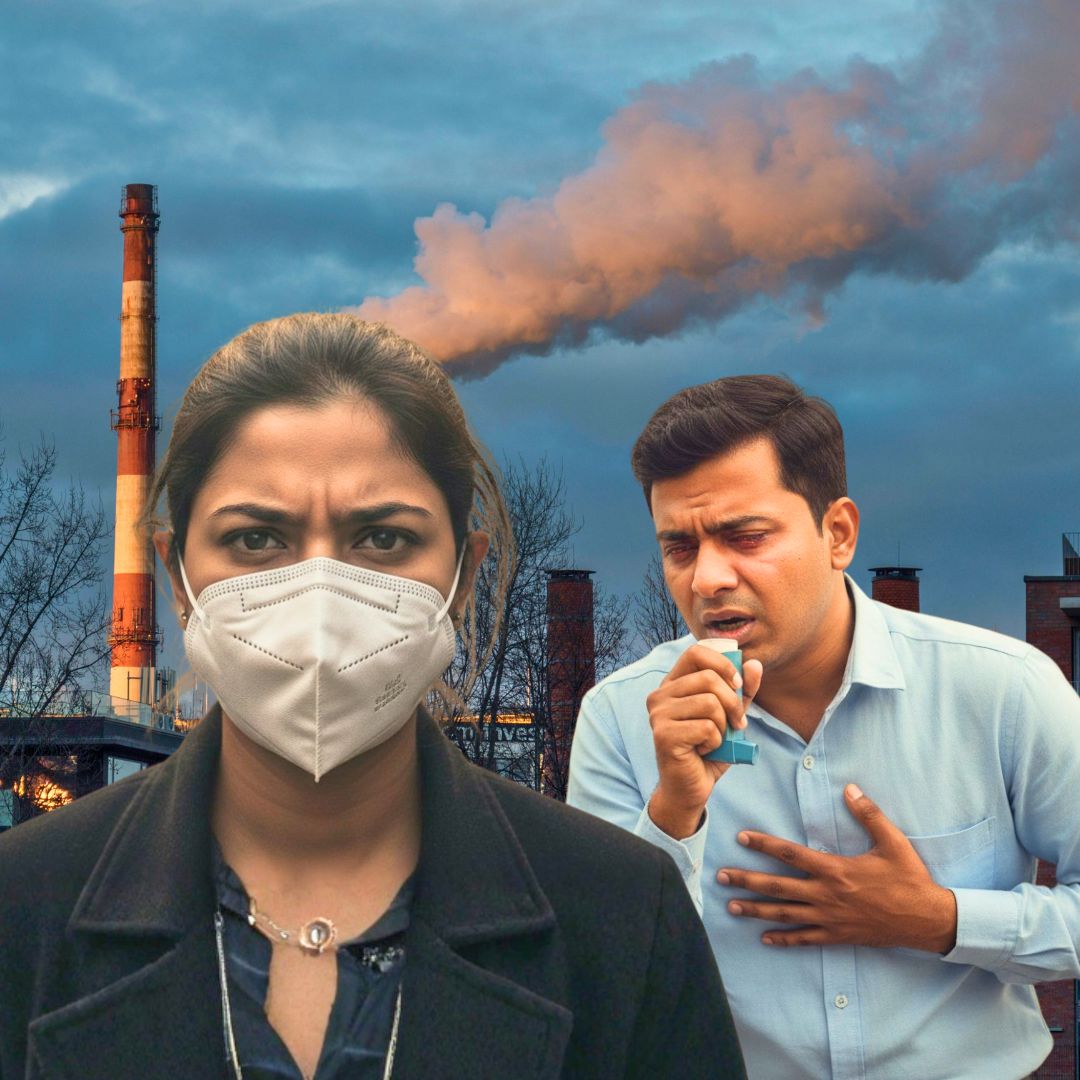Delhi’s air quality has reached hazardous levels, with the Air Quality Index (AQI) hitting above 300 on Friday morning according to Central Pollution Control Board (CPCB), making the capital one of the most polluted cities in India.
The severe pollution arises from a toxic mix of post-Diwali smog, ongoing stubble burning in neighbouring states Punjab, Haryana, and Uttar Pradesh, and low wind activity that traps pollutants over the city.
Officials warn that the pollution exposes residents to conditions akin to passive smoking, urging vulnerable populations to limit outdoor activities and take protective measures. Despite efforts like anti-smog guns and traffic restrictions, the situation remains dire, with protests growing over government inaction.
Stubble Burning: The Primary Culprit
Satellite data reveals heavy stubble burning activities with 94 fires detected in Punjab, 13 in Haryana, and 74 in Uttar Pradesh on Wednesday alone. This biomass burning releases massive quantities of particulate matter (PM 2.5), contributing approximately 37% to Delhi’s pollution levels on Friday.
Transport is the second-largest contributor, accounting for about 11-16% of pollution. The stubble fire smoke heavily burdens the air quality, combining with local emissions to push AQI deep into the hazardous zone. Weather conditions including stagnant air and low wind speeds have exacerbated the problem, preventing dispersion of toxic smog.
Health Risks and Public Concerns
The dense smog and toxic dust have severe health implications, particularly for children, elderly, and people with respiratory conditions. Experts equate breathing this polluted air to smoking multiple cigarettes daily, posing risks of respiratory illnesses, eye irritation, and cardiovascular problems.
Public anxiety has risen, with many experiencing difficulty breathing and eye discomfort. In response, Delhi’s health department advises wearing N95 masks outdoors and minimizing exposure.
The community’s frustration is visible in protests at Jantar Mantar, where over 80 activists, students, and citizens have demanded urgent government intervention and long-term pollution control strategies.
Research from health and medical journals shows that air pollution can cause many health problems, especially when AQI is high:
- Breathing problems like asthma attacks, coughing, and wheezing
- Eye irritation and throat soreness
- Increased risk of heart diseases and stroke
- Lung infections and reduced lung function, particularly in children
- Worsening of chronic illnesses such as bronchitis and COPD
- Possible damage to brain function and development in children with long-term exposure
Exposure to very poor or hazardous air quality can affect even healthy people, making it important to take precautions.
Government Response and Needed Action
Delhi authorities have ramped up anti-pollution measures, including deployment of anti-smog guns, mechanical road sweepers, and restrictions on commercial vehicles without PUC certificates. Cloud seeding experiments and emergency alerts have been issued as temporary measures.
However, activists argue these actions are insufficient without coordinated efforts to tackle stubble burning outside Delhi and structural changes towards cleaner transport and industry policies.
The central and Delhi governments face increasing pressure to devise sustainable, multi-state pollution control frameworks. Comprehensive public awareness and community cooperation are vital to improving the air we breathe.
What is AQI?
The Air Quality Index (AQI) is a simple number that tells us how clean or polluted the air is on any given day. It measures common pollutants in the air, like dust, smoke, and gases that can harm our health. AQI values range from 0 to 500, with higher numbers meaning dirtier, more dangerous air. Here are the common AQI levels explained:
- Good (0-50): Air is clean and safe for everyone.
- Moderate (51-100): Air quality is okay but may cause minor issues for very sensitive people.
- Unhealthy for Sensitive Groups (101-150): Children, elderly, and those with health problems may feel effects.
- Unhealthy (151-200): Everyone may experience health effects, such as breathing discomfort.
- Very Unhealthy (201-300): Health warnings apply to all; vulnerable groups face more serious risks.
- Hazardous/Severe (301-500+): Emergency conditions where everyone may suffer serious health problems.
These levels help people decide how much to protect themselves from pollution depending on how clean or dirty the air is.
How to Stay Safe from Air Pollution
To protect yourself and your family, consider these steps during bad air days:
- Limit outdoor activities, especially strenuous ones like exercise
- Wear an N95 or equivalent mask if you need to go outside
- Keep windows and doors closed and use air purifiers indoors if possible
- Avoid burning firecrackers, wood, or trash, which add pollution
- Stay hydrated and eat a healthy diet to support your immune system
- Monitor local air quality updates to plan your day accordingly
Collective Efforts Needed to Tackle Air Pollution
Air pollution is a complex problem that requires cooperation from everyone:
- Governments should enforce strict pollution control laws, improve public transport, and promote cleaner fuels and industries
- NGOs can raise awareness, organise tree planting and clean-up drives, and support affected communities
- The general public can reduce vehicle use by carpooling or using public transport, avoid burning waste, and support policies for a cleaner environment
Long-term cooperation between governments, communities, and individuals is essential to reduce pollution and protect public health.
The Logical Indian’s Perspective
This severe pollution crisis calls for heightened empathy and collective responsibility from all stakeholders — government, citizens, and neighbouring states.
Beyond temporary fixes, addressing the root causes through dialogue, understanding, and cooperation is crucial for a peaceful and sustainable future. We advocate for harmony between economic growth and environmental stewardship.
Disclaimer: This article is for informational purposes only and should not be considered medical advice. Readers are advised to consult qualified healthcare professionals for concerns related to air pollution exposure or health symptoms.











